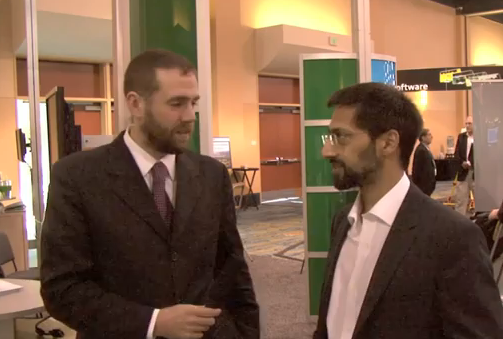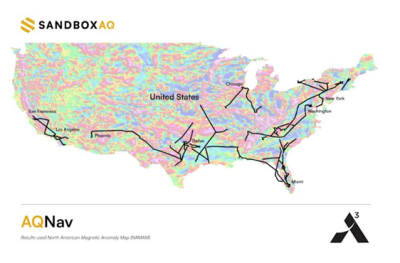HOUSTON – Bentley made news at the recent SPAR International conference with its announcement that the newly released Descartes V8i (SELECTseries 3) combines point clouds, raster imagery, and geometry in a way that Bentley said is an “industry first.”
But what does that mean, in practice?
This reporter got a chance to sit down with Benoit Fredericque, product manager for MicroStation/Descartes Point Cloud and 3D City GIS; Faraz Ravi, Pointools founder and now director of product management for point clouds at Bentley; and Joe LouAllen, account manager for civil infrastructure, to get a guided tour of the new software plug-in. Most importantly, what can you do now that you couldn’t do before, and why is it important?
Basically, it all boils down to “extending the Microstation platform support for point clouds,” said Fredericque. “That’s the improvement, really.”
Most of that comes with very practical capabilities for working with the point cloud data, itself, which can be dense and unwieldy when you dive right into it. Say you’re trying to take a measurement from a thin pole to another point in the scene you’re looking at: How do you know if the point you clicked on is actually the pole, or is maybe a point on the ground just behind it? Well, using Descartes you can now ask the program to colorize what is the pole automatically, providing easy visual separation.
Fundamentally, “It’s the ability to with confidence extract geometry from a point cloud,” said Ravi. “It’s easier to classify points, you can turn off classes of points.”
You can select all of the points that make up that object and make them disappear. You can use a tool to easily see all of the points that are on the plane you’re working with. You can automatically highlight the lowest or highest point on that plane. These tools make the point cloud less opaque and easier to extract information from.
Which leads toward the ultimate goal: “You need to model less, and you can work with a more hybrid type workflow,” Ravi said.
Combine that with the new ProjectWise capability of streaming the point cloud portions you’d like to work with from a central database, on demand, and Bentley believes it will be much more likely that disparate parties within an organization actually make use of the point cloud data, rather than CAD models derived from it.
“You won’t be duplicating the data for no good reason,” Fredericque said. “There are two ways to do this. Either I have my full point cloud, and do a full 3D model and that’s what I provide to my engineers, or I bring the point cloud to the end users and give them tools to use the point cloud. We need to facilitate the way they understand the point cloud and give them tools to extract geometry on demand.”
From this reporter’s perspective, it would seem that Descartes and ProjectWise are significant steps in that direction. Does anyone think the workflow has been perfected? No one from Bentley would say that all the development is done. Far from it. But progress is being made, and it’s likely this kind of taste of the potential for the point cloud’s utility will only drive further demand from the end users who will see yet more potential.






